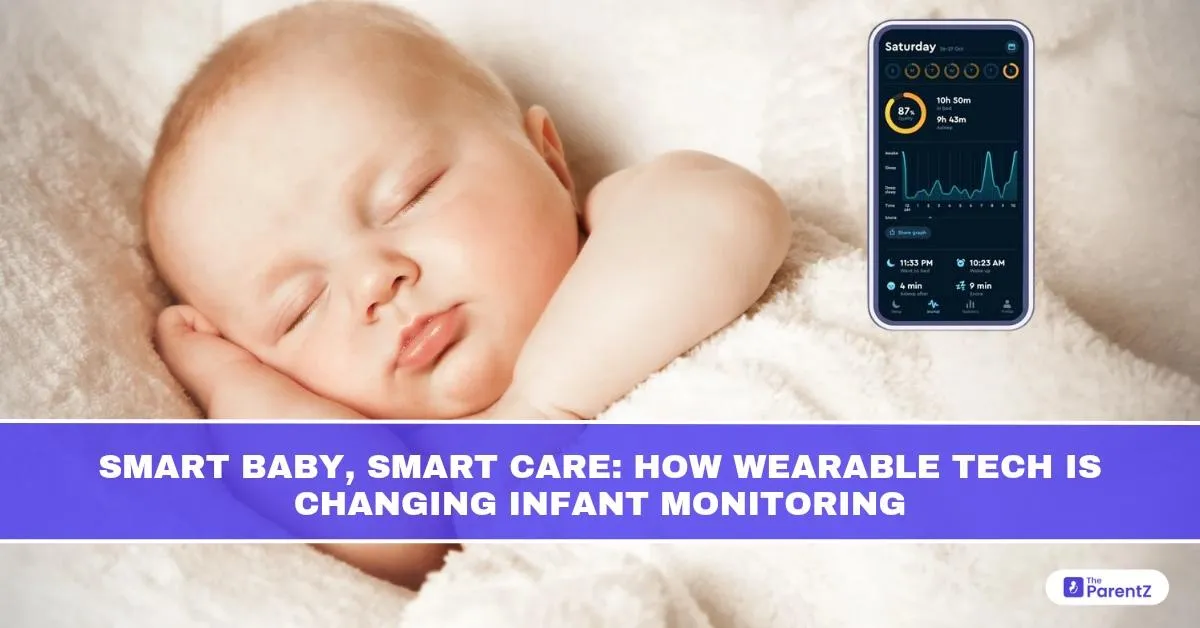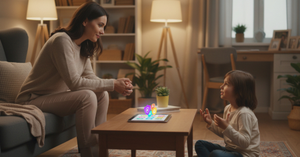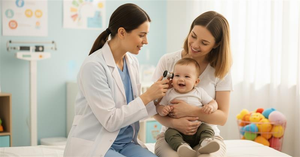Newborns don’t come with instruction manuals, but modern technology is getting close. In today’s age of parenting, wearable devices are reshaping how we care for infants. From smart socks that monitor oxygen levels to gentle patches that track sleep and movement, the future of baby care is not only digital, it’s deeply personal and reassuring.
Wearable technology offers new parents what they crave most: peace of mind. It empowers them with real-time data, early alerts, and a better understanding of their baby’s needs, all without constant physical checks or sleepless guesswork.
Why Infant Monitoring Matters
In the first year of life, a baby’s body is developing rapidly. While most infants grow and thrive without issues, some conditions, like breathing irregularities, poor sleep patterns, or fevers, can escalate quickly if unnoticed.
Traditionally, parents relied on intuition, frequent checks, and sometimes, anxiety-fueled over-monitoring. Now, wearable tech offers a new approach: continuous, low-intervention monitoring that supports both safety and sleep.
What Is Wearable Infant Tech?
Wearable infant devices are small, non-invasive gadgets that attach to the baby’s body, usually the foot, chest, abdomen, or ankle. They use sensors to track vital signs or patterns and transmit the data to a caregiver’s smartphone.
These smart monitors can track:
- Heart rate
- Breathing rate or oxygen levels
- Body temperature
- Sleep cycles and movement
- Position (whether baby is on their back or stomach)
- Feeding schedules (via integrated tracking apps)
Some are standalone wearables, while others work with apps and cloud-based data to analyze trends or flag warning signs.
Popular Examples of Infant Wearable Tech
1. Smart Socks and Foot Bands
These soft, washable wearables wrap around the baby’s foot and track oxygen levels and heart rate during sleep. They alert caregivers if levels fall outside safe ranges.
Popular use: Night-time peace of mind, especially for preemies or babies with health concerns.
2. Smart Patches or Chest Bands
These track breathing and sleep patterns and are often used for babies with reflux or at risk of sleep apnea. Some provide vibration cues if breathing becomes shallow or irregular.
3. Temperature Monitoring Stickers
Placed under the arm or on the skin, these detect and send real-time temperature readings to a parent’s phone, useful during fever episodes or vaccinations.
4. Movement and Position Trackers
These help ensure that the baby is sleeping safely on their back and not rolling into unsafe positions. Some can detect prolonged stillness and alert caregivers.
5. Bluetooth-Enabled Diaper Sensors
Yes, even diapers have gone smart; these sensors detect wetness or stool, helping track output patterns and reduce diaper rash risks.
Benefits for Parents and Babies
1. Early Detection of Problems
Wearables can alert parents to early signs of distress, whether it’s a drop in oxygen or fever onset, so that care can be sought promptly.
2. Reduced Parent Anxiety
For many, having access to real-time data helps them sleep better and worry less, especially during the fragile newborn months.
3. Improved Sleep Tracking
By monitoring movement and sleep stages, these devices help parents understand their baby’s natural rhythms and improve routines.
4. Useful for At-Risk Babies
Premature infants, babies with heart or lung concerns, or those with a history of apnea benefit greatly from continuous, non-intrusive monitoring.
5. Seamless Integration with Apps
Many devices sync with parenting apps, offering insights, growth charts, and even personalised suggestions based on collected data.
Are These Devices Safe?
Generally, yes, when used properly. Most infant wearables are:
- Non-invasive and made with soft, hypoallergenic materials
- Wireless, using safe levels of Bluetooth or Wi-Fi
- Designed with baby safety standards in mind
However, they are not medical devices unless explicitly cleared by regulatory bodies (like the FDA or CDSCO in India). They should not replace professional medical care, diagnosis, or advice.
Parents should also avoid over-reliance. A wearable monitor can aid peace of mind, but it cannot guarantee safety or prevent sudden infant death syndrome (SIDS).
Do Pediatricians Recommend Wearable Tech?
Opinions vary.
Some pediatricians encourage their use, especially for high-risk infants or anxious parents who benefit from the reassurance. Others caution against depending too much on consumer tech without medical oversight.
The American Academy of Pediatrics currently does not recommend routine use of home monitors for healthy babies as a way to prevent SIDS. However, they acknowledge the growing interest and potential of these tools for select cases.
Always discuss with your pediatrician before using such a device, especially if your child has a known medical condition.
Things to Consider Before Buying
If you’re considering a wearable monitor for your baby, ask yourself:
- Is this medically necessary or for general reassurance?
- Has the product been tested or cleared by safety authorities?
- How reliable is the alert system—does it offer real-time notifications?
- Is the device comfortable and easy to use?
- Does the app collect and store data securely?
- Is customer support available if you have issues?
Also, consider whether it fits your lifestyle and parenting style. Some families find it comforting, others feel it adds more worry.
Conclusion: Smart Baby, Smarter Parenting
Wearable tech won’t raise your child, but it can support you in doing so with more confidence, insight, and calm. Whether you’re monitoring sleep, catching early signs of illness, or just sleeping better yourself, knowing that an alert system is in place, these tools are helping modern parents redefine baby care.
Ultimately, no gadget replaces your intuition, presence, or love. But when used thoughtfully, wearable infant tech can offer the perfect blend of safety and support for today’s smart families.








Be the first one to comment on this story.